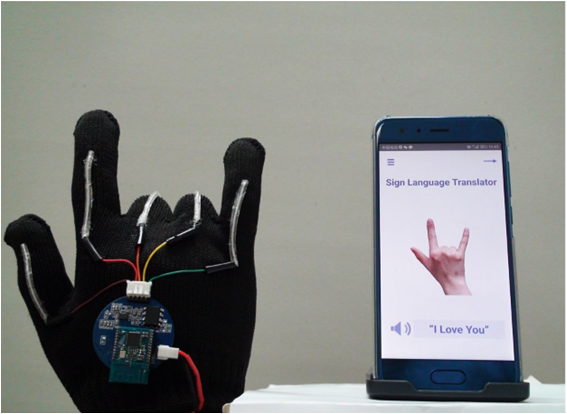We talk a lot on this show about how technology can be used to make the world more inclusive – and here’s a new example of that.
It may even finally convince me to put down the Nintendo Power Glove (for a while).
A team at UCLA has built technology into a glove that can recognize the hand movements from American Sign Language and translate those movements into spoken English in real time.
The glove has strands of special electricity-conducting yarn that runs the length of each finger.
These sensors detect each hand and finger movement and send them as electrical signals to a small circuit board near the wrist.
It sends wireless signals to a smartphone app which can translate and say aloud about one word per second.
By the way, since facial expressions are also a big part of ASL, the system includes small sensors that can be worn near the eyebrows and near the mouth, to fully detect signs.
There have been systems like this before, but the UCLA team says theirs is lighter and more flexible than the previous models.
The lead researcher, Professor Jun Chen, says this will not only help ASL speakers communicate directly with non-ASL speakers without the need for an interpreter.
But he says he also hopes the technology encourages non-ASL speakers to take up the language.
And honestly, if I get to wear high-tech gloves, then sign me up.
Scientists at Australia’s Commonwealth Scientific and Industrial Research Organisation, meanwhile, may have found a big win for anyone who wears clothes.
Dyeing cotton often requires some chemicals that aren’t the most eco-friendly stuff in the world.
So they’ve found a way to modify the cotton so that it can make its own color. No chemicals necessary.
How about some hot pink? Or lime green?
Wearable-tech glove translates sign language into speech in real time (UCLA)
CSIRO scientists discover how to grow coloured cotton, removing need for harmful chemical dyes (ABC.net.au)
Add some color to your life as a Cool Weird Awesome backer on Patreon
Smart glove photo: Jun Chen Lab/UCLA

